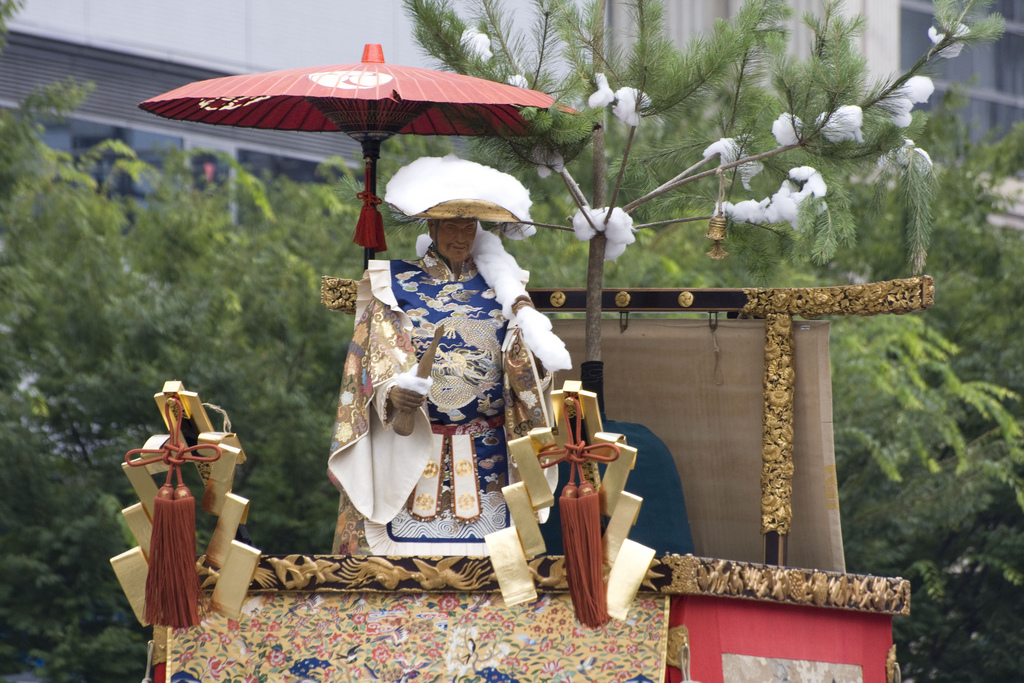
Float representing Moso, a figure in folklore, at Kyoto’s Gion Matsuri. Photo © Chris Gladis, licensed Creative Commons Attribution.
Almost every town and city in Japan has its own matsuri (festival) celebrating the new year, changing seasons, or a historic event. Matsuri often take place at local shrines and are a chance for neighbors and communities to join together; spectators are often welcome to participate.If you travel to Fukuoka in May or July, plan to take in at least one of their popular festivals. The Hakata Dontaku Festival is held May 3 and 4 during Golden Week. Groups of musicians in unique costumes play traditional or brass instruments and parade through 1.2-kilometer-long “Dontaku square”; others dressed as one of three lucky gods beat shamoji or wooden rice spatulas. In addition, thousands of dancers and singers perform on stages set up around the city. Elaborate floats called yamagasa, adorned with beautiful Hakata dolls, are pulled by men in headbands and loincloths to Kushida shrine.The festival has an 800-year history and attracts two million visitors each year. The term dontaku comes from the Dutch word zontag (Sunday or holiday), revealing Kyushu’s history of trade with the Dutch.
The other well-known Fukuoka festival is Hakata Gion Yamagasa, which takes place July 1–15 each year. Elaborate floats called yamagasa, adorned with beautiful Hakata dolls, are pulled by men in headbands and loincloths to Kushida shrine. The climax is the Oiyama race on the final day of the festival. Precisely at 4:59 A.M. teams of men race five kilometers carrying the one-ton yamagasa floats. There are also performances of traditional Noh dramas at Kushida shrine. This festival was designated as an intangible folk cultural asset by the government in 1979. To get to Kushida shrine, take the Nishitetsu bus to Canal-city from JR Hakata station.
August 12–15 is Obon (festival of the dead) throughout Japan, a time when ancestral spirits return to visit. People go back to their hometowns to meet relatives and visit their family graves. At night there is lively folk dancing, music, and food. After three days the spirits are sent off on lanterns floated on rivers and seas. If you plan to travel during Obon season, be ready for crowds.
One of the most famous Obon festivals is Awa Odori (Awa dance), which takes place in Tokushima city in eastern Shikoku. Dancers in colorful yukata (cotton kimono) dance through the streets accompanied by threestringed shamisen, taiko drums, flutes, and gongs. Awa is the old name for Tokushima and the unique “drunken-style dancing” is said to have started when Tokushima Castle was built in the 16th century and peasants celebrated by drinking and dancing. More than one million tourists descend on the city each year to see the Awa Odori.
See Japan’s National Tourism Organization for more festivals.
Excerpted from the Third Edition of Moon Living Abroad in Japan.